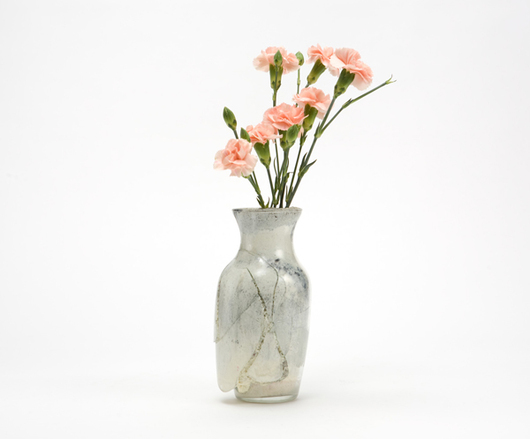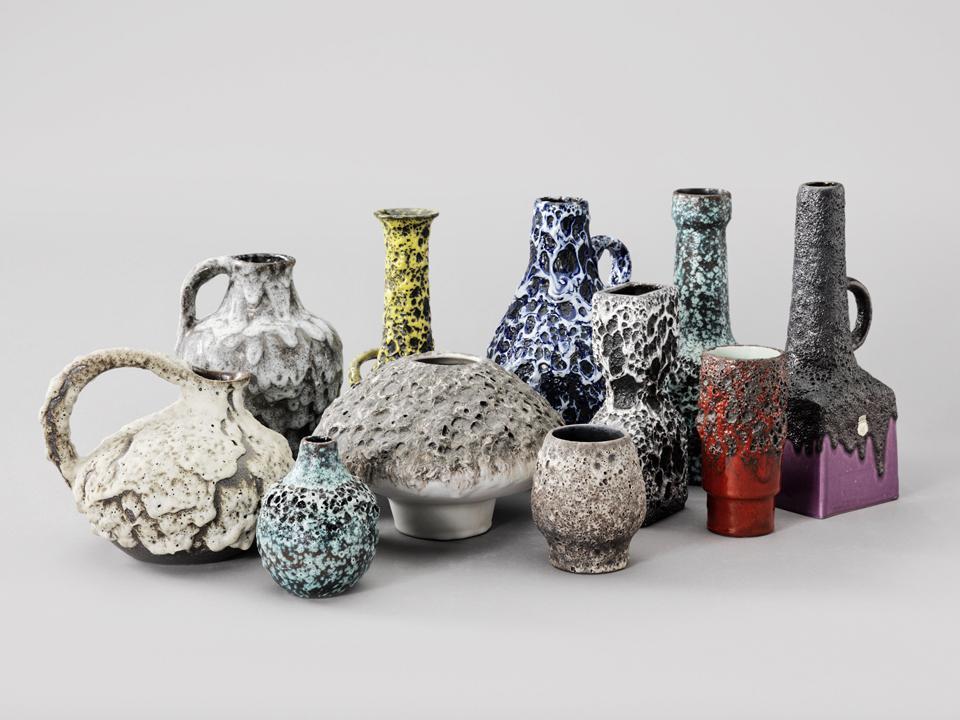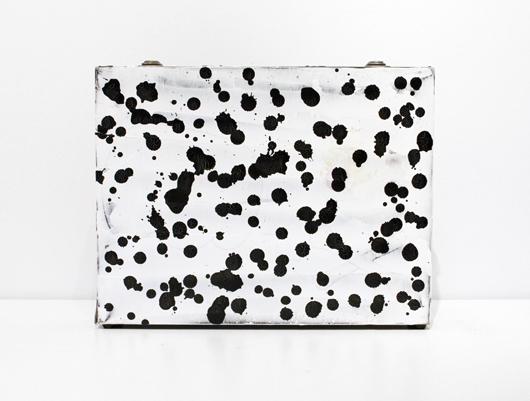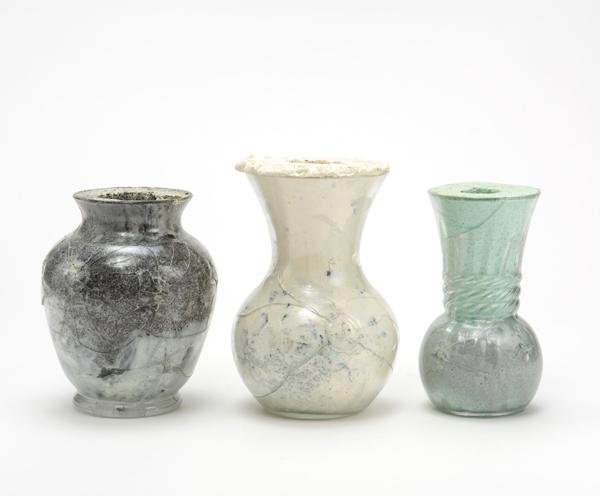
01.30.13
The Making of
Shatter Vases by Pete Oyler and Misha Kahn for Assembly
If you have a great design sense, and if you enjoy sending people flowers, you’ve probably noticed by now that the two don’t exactly tend to play well together. Unless you’re clued into a place like The Sill, our new favorite Brooklyn-based succulent delivery service, you know your lucky recipient is most likely going to receive their posies in some boring glass trifle that will inevitably end up in the freebie box at his or her next garage sale. That’s why, when young designers Misha Kahn and Pete Oyler hit up a Salvation Army looking for castoff vessels to experiment with for their latest project, they had absolutely no trouble filling up their cart. It’s tough out there for a generic FTD vase, especially one whose emptiness eventually reminds you of a failed relationship or a hospital stay.
Kahn and Oyler decided that, just in time for Valentine’s Day, they’d take their thrifted castoffs and give them new lives as objets d’art, filling them with colored resin and shattering them in place (hence the name). “We wanted to capture the instantaneous,” the pair write in their project description. “The gesture of shattering and freezing the vases simultaneously subverts their typical use and life-cycle while reconstituting them as extraordinary objects: Each is completely unique in both in its contents and configuration.” Kahn and Oyler have described to us in detail below the process behind the vases; as of tomorrow, you’ll be able to buy one for your sweetheart — or yourself — on the website of Assembly, the design brand Oyler runs with Nora Mattingly.
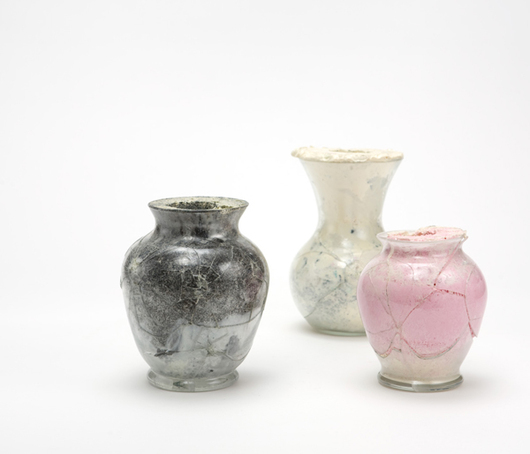
Pete: “Misha and I had been wanting to work on a project together for awhile, and somehow, through a series of nearly illegible sketches and a lot of brainstorming email correspondences, we developed the idea of taking a totally overlooked object and transforming it without losing its essence.”
Misha: “At one of our first meetings I brought a bag of samples, and one of the things in there was this foam I’d developed by mixing incompatible resins and dyes — you know, doing exactly what the package says NOT to do. The normally slick resin turns into a middle-school baking soda and vinegar experiment and then sets just moments later. It’s in this brilliantly short period of time that Pete and I thought we could make something amazing happen. We sent emails back and forth with ideas for vases, and then we started incorporating the idea of using pre-existing vases with this resin process, to see if we could blow them up and keep the shape at the same time.”
Pete: “Misha came to visit us here in Northampton, Mass., and we took a trip to the Salvation Army to material shop. We were blown away by how many identical vases we saw. We bought as many as there were and started working. In order to alter the vases and give them each a unique tone, we cast resin directly into each one using a plunger-like mold that allowed us to maintain a cavity in the vase and keep it functional afterwards. While one of us held the vase, the other hammered. The glass shattered, but we had allowed the resin to cure just enough to keep the broken pieces intact. We used dyes that caused the resin to expand at a relatively quick pace just before setting, mixing our own colors to control the expansion. That said, it took us awhile to get the timing right: If we shattered the vase too soon, the resin and glass would just fall to the floor. If we waited too long, the result was too limited. Once the vases had completely cured, we cleaned them off with a razor blade, some lacquer thinner, and elbow grease. To ensure the vases would maintain their purpose, we top-coated them with a resin/sealer spray.”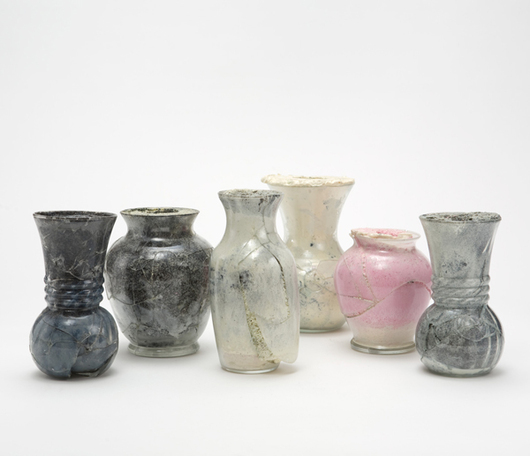
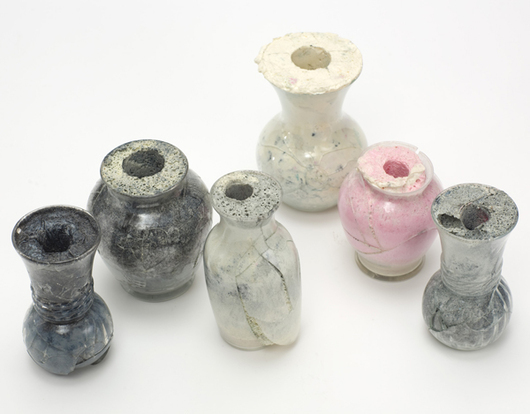
Misha: “In our heads, the things would triple in size yet keep their proportions, but the actual results were maybe even more alluring: The vases shatter and only slightly expand, making them look like a dowdy marble vase someone’s wealthy grandma might have. This conservative first impression makes the strange material palette more engaging. The raw foam on top has a totally different look than the foam that’s against the glass, which is so marbly and rich. For Pete and I, referencing ubiquitous American objects is super important — using (or abusing) them is part of the content. Everyone has a relationship to these hyper-standard vases, like getting flowers from an ex you no longer speak to, etc. To us, shattering that — and making the shattered object look rare and precious and, dare I say, expensive — was design territory that needed touching on.”
Pete: “I’d say we achieved our goal of taking a very ordinary and functional object and, through a series of collaborative actions, transforming it into an extraordinary object while still maintaining its essential function — to hold water and flowers.”